Engagement Ring - In Progress
Setting
Stone
Purchase any Engagement Ring and receive a $250 Gift Card for your Wedding Band. Ends soon.
Deepen the well of love in the world.
We guarantee that every single purchase directly impacts one person's life by giving them access to clean water.
are you planning
…to propose with a vintage style engagement ring but don’t know where to begin? Don’t worry – we’ll explain everything you need to know in three easy steps.
Vintage engagement rings are gorgeous and withstand the test of time. The definition of the opposite of a fad, a vintage engagement ring shows that you value classic style. After all, there is a reason this style remains so sought after, decade after decade!
WHAT IS CONSIDERED A VINTAGE ENGAGEMENT RING?
A vintage engagement ring is one that is between 50-100 years old! Any older than that, and a ring becomes “antique.” However, what most people mean by this question is what a vintage STYLE engagement ring means. A vintage style engagement ring is a new ring that has the look of an older style!
WHAT MAKES AN ENGAGEMENT RING LOOK VINTAGE?
Vintage engagement rings can be simple or very complex. It depends on the era in which the style was popular! However, there are multiple details which always evoke a vintage feel. These include pave side stones, engraving, and filigree. Additional options to consider include metal choice (gold or platinum), baguettes, and unique prong arrangements!
Pave
Pave side stones as tiny round cut diamonds that glitter like sugar on your band. These diamonds are “paved” into the metal. Vintage engagement rings often feature stones like this on the top of the band, and sometimes the sides!
Engraving
Vintage rings are frequently hand-engraved with romantic swirls, flowers, or wheat patterns. Today, couples have the option of hand-engraving or choosing to have the design added into their custom CAD design!
Filigree
A fancy term jewelers use for curlicues is “filigree.” Filigree can take the form of lacework across the entire ring, or curly support structures underneath! Also called “openwork”, filigree that has open areas between the curls makes your ring a bit less heavy, both in terms of look as well as weight.
Vintage Prong Styles
Vintage and antique engagement rings sometimes have unique prong arrangements such as fishtails or split prongs. Additional setting styles that were more common in bygone eras were illusion settings and settings that featured prongs all around the stone – sometimes upwards of 12-18 prongs! These more fanciful prong styles are less common in modern rings. So, adding this kind of detail is a great way to get a vintage look.
Metal Choice
Just like styles of today, metal colors wax and wane in popularity. For example, in the art deco and Edwardian eras, platinum was all the rage. However, in the Victorian era, yellow and rose gold were popular! Meanwhile, white gold was invented in 1920 as a result of the war. And, vintage style engagement rings created today can be made in any metal!
Baguette Side Stones
Popular in the art deco era for their sharp edges and in the midcentury modern era for their classic simplicity, baguettes are long, mirror-like diamonds that add an air of elegance. Baguettes can be added vertically for a deco look, or horizontal for midcentury modern appeal!
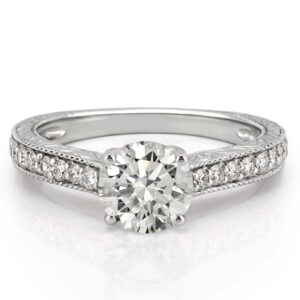
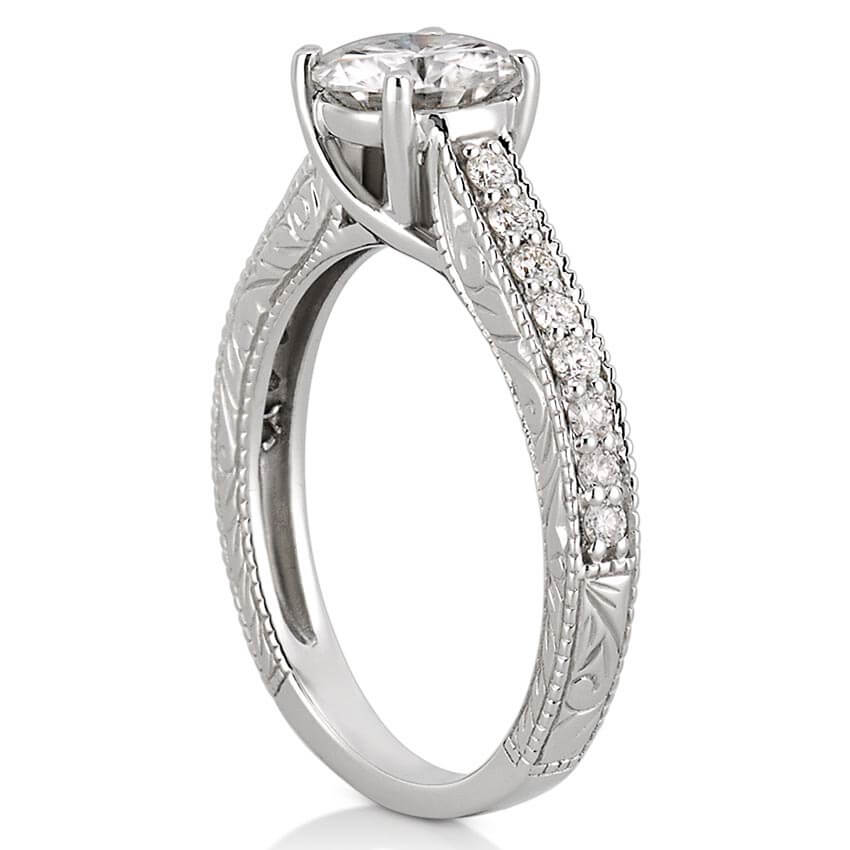
Engraved Engagement Ring with Diamonds
$1,150.00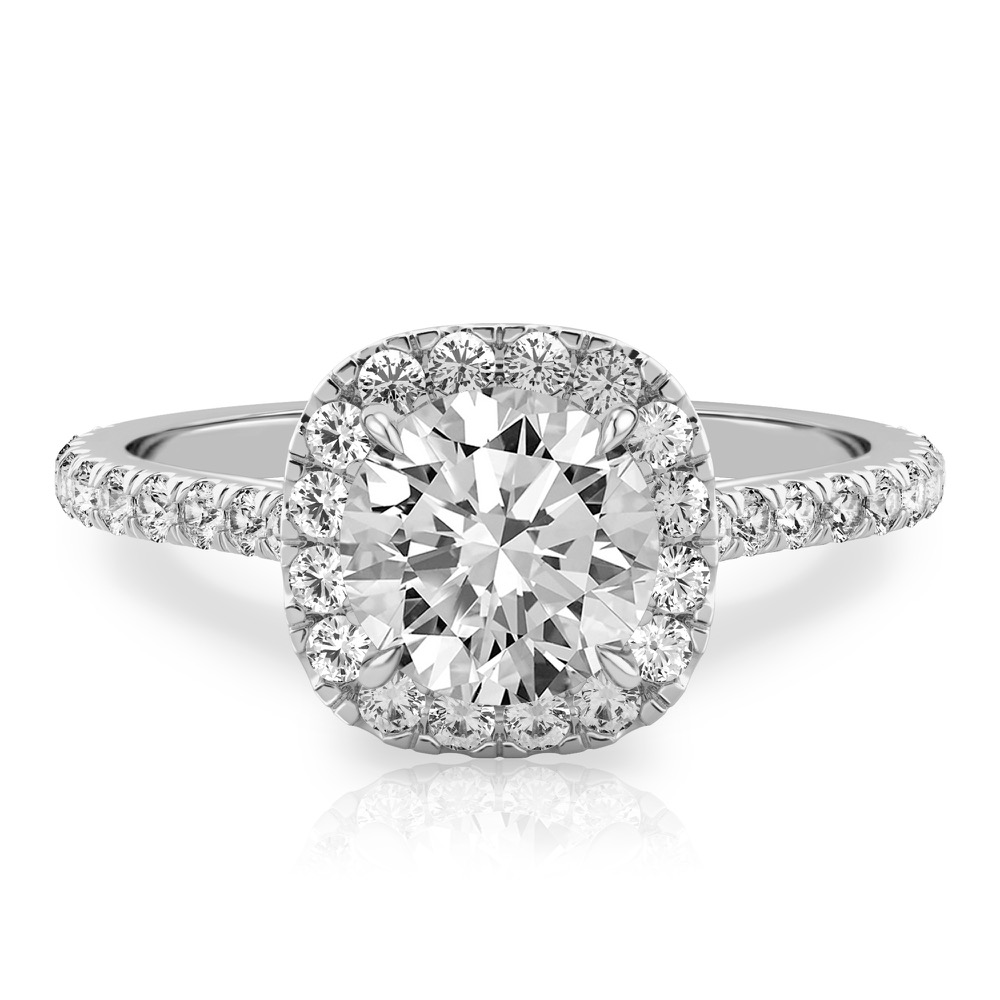
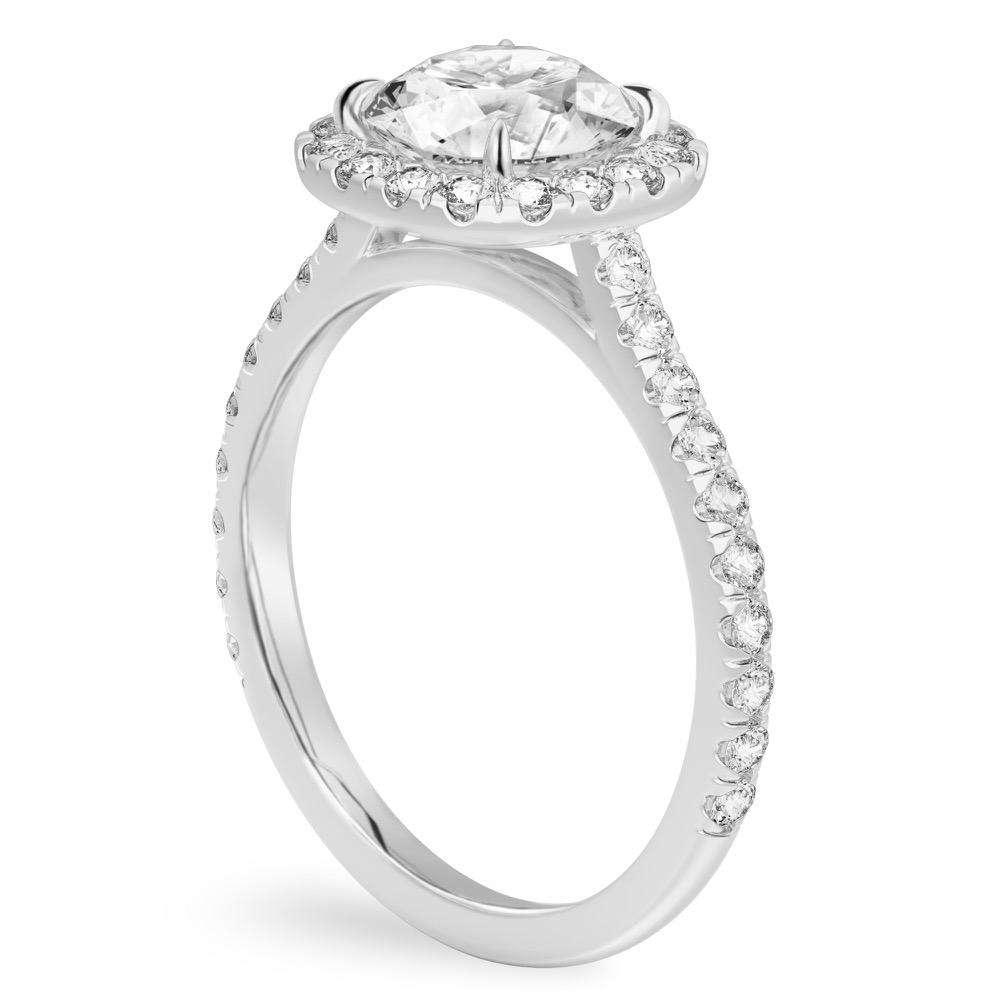
Cushion Halo Ring
$1,580.00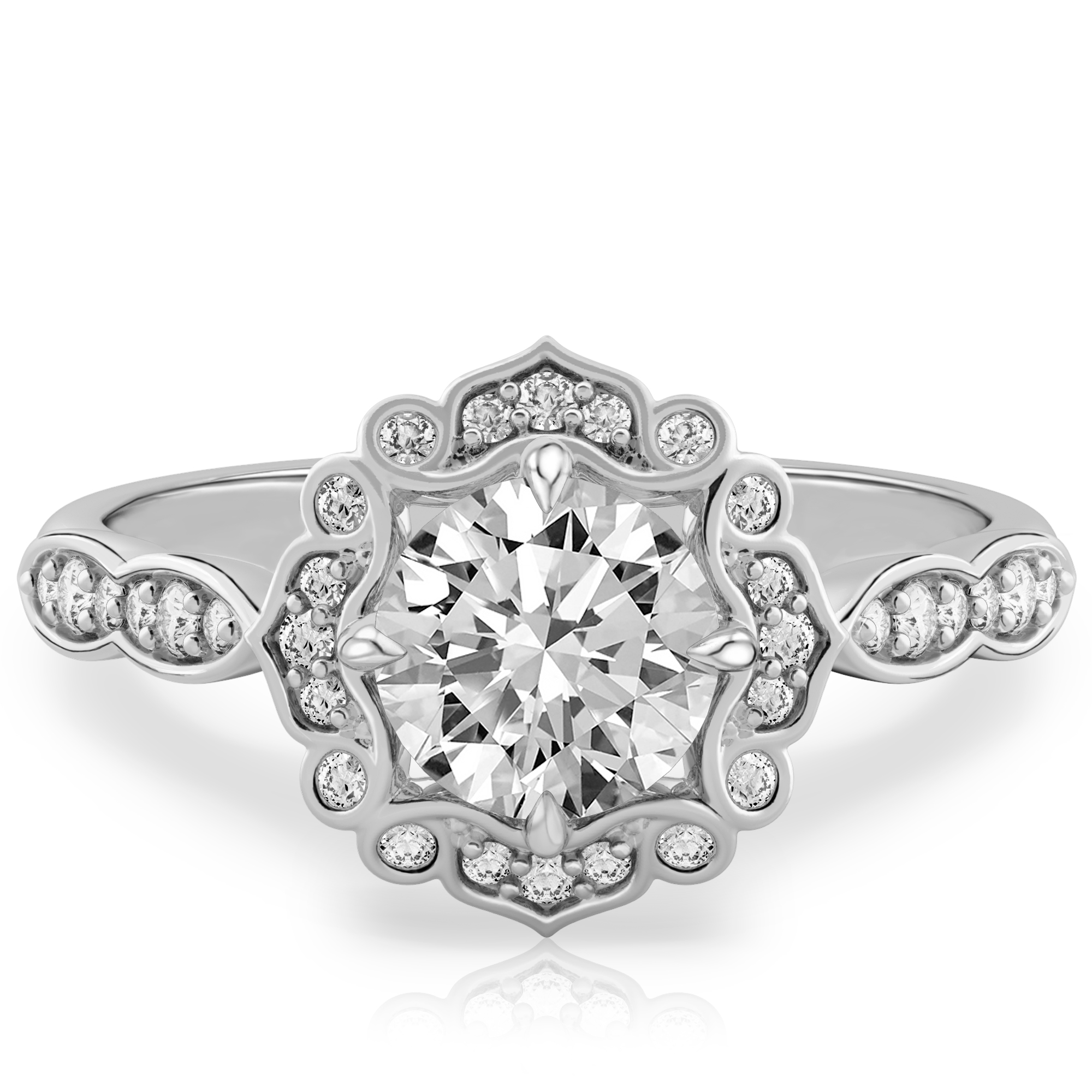
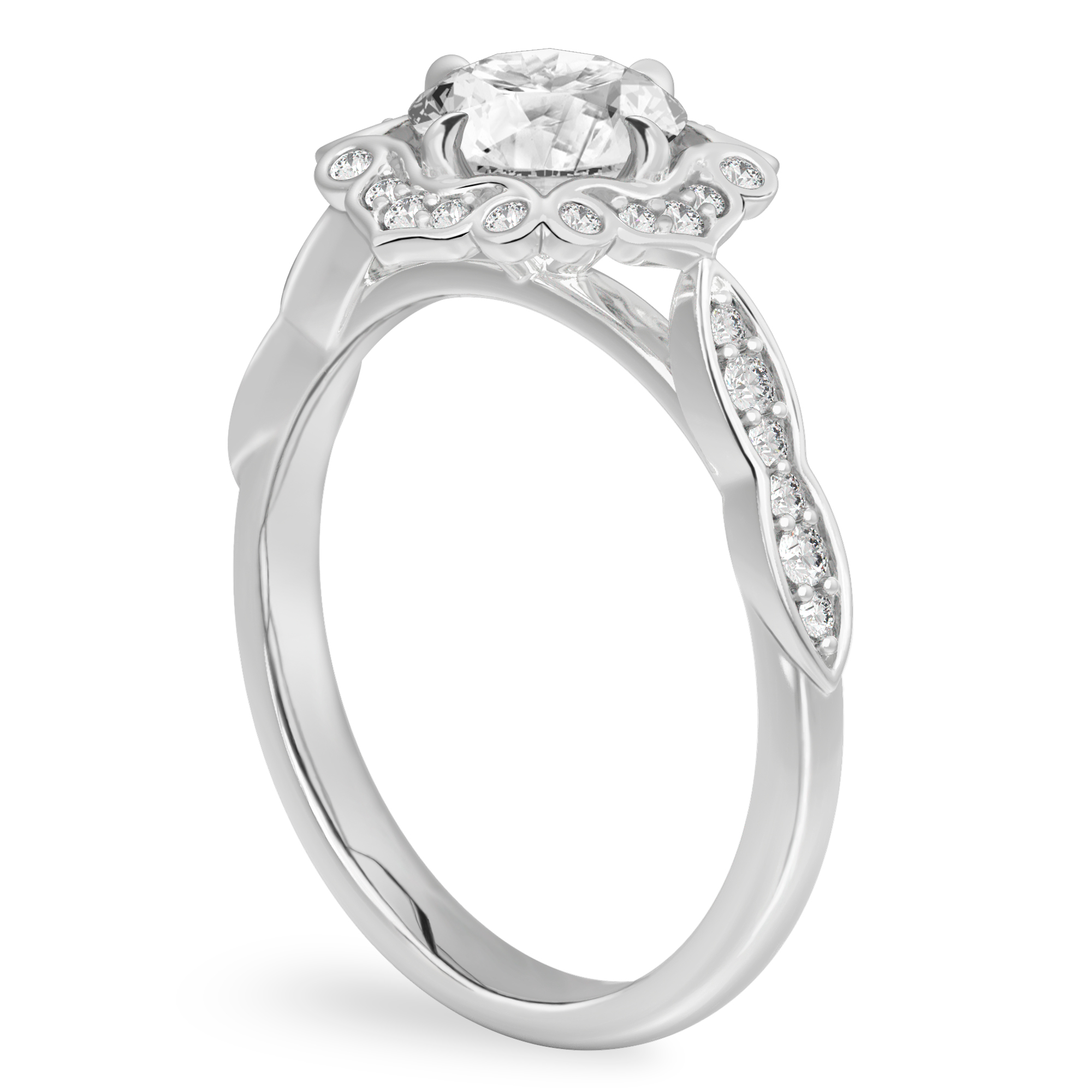
Floral Ring with Pave Side Stones
$1,280.00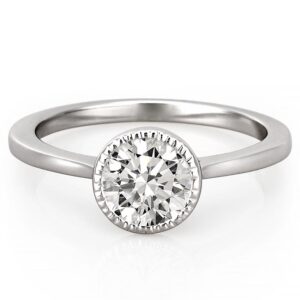
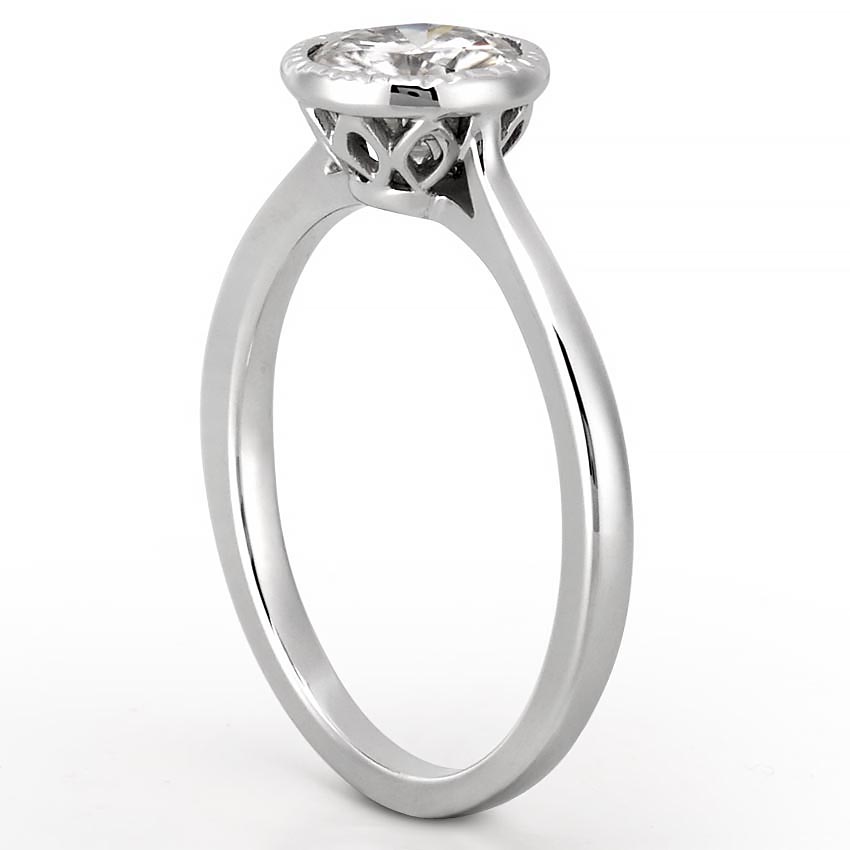
Milgrain Bezel Engagement Ring
$880.00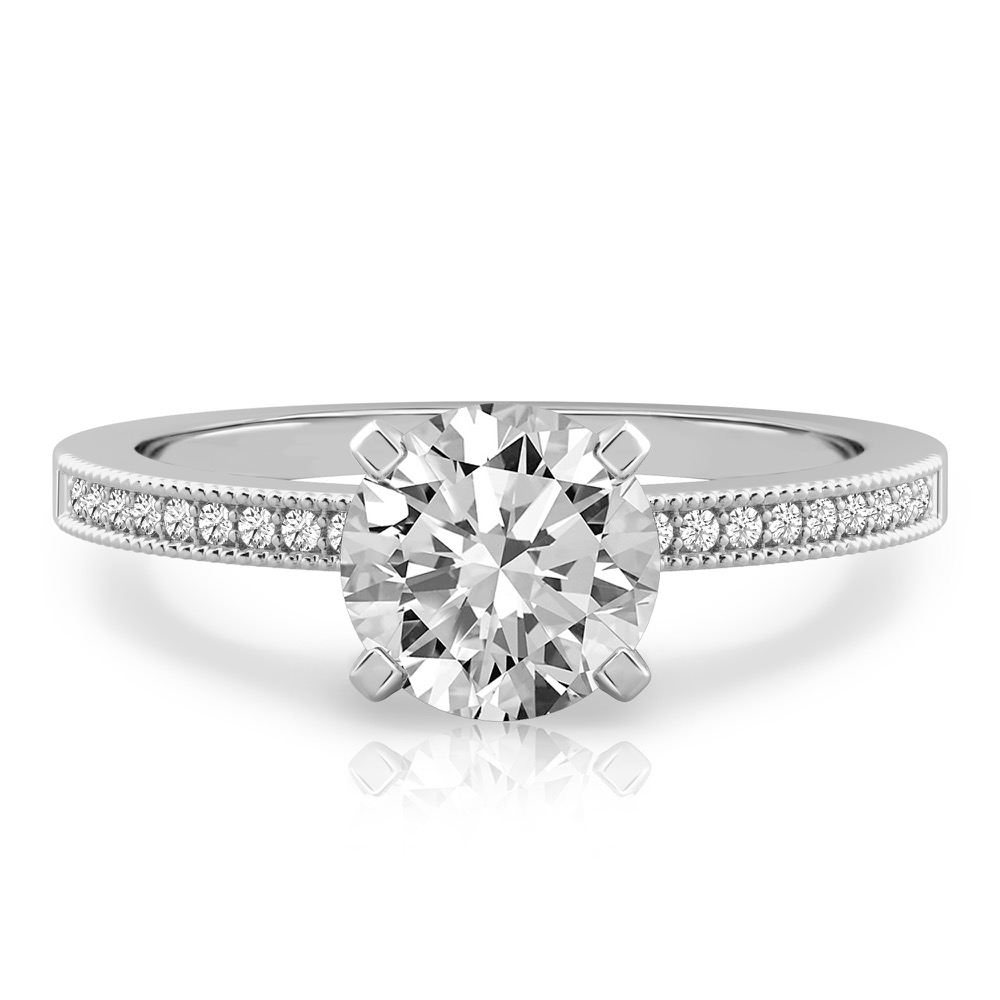
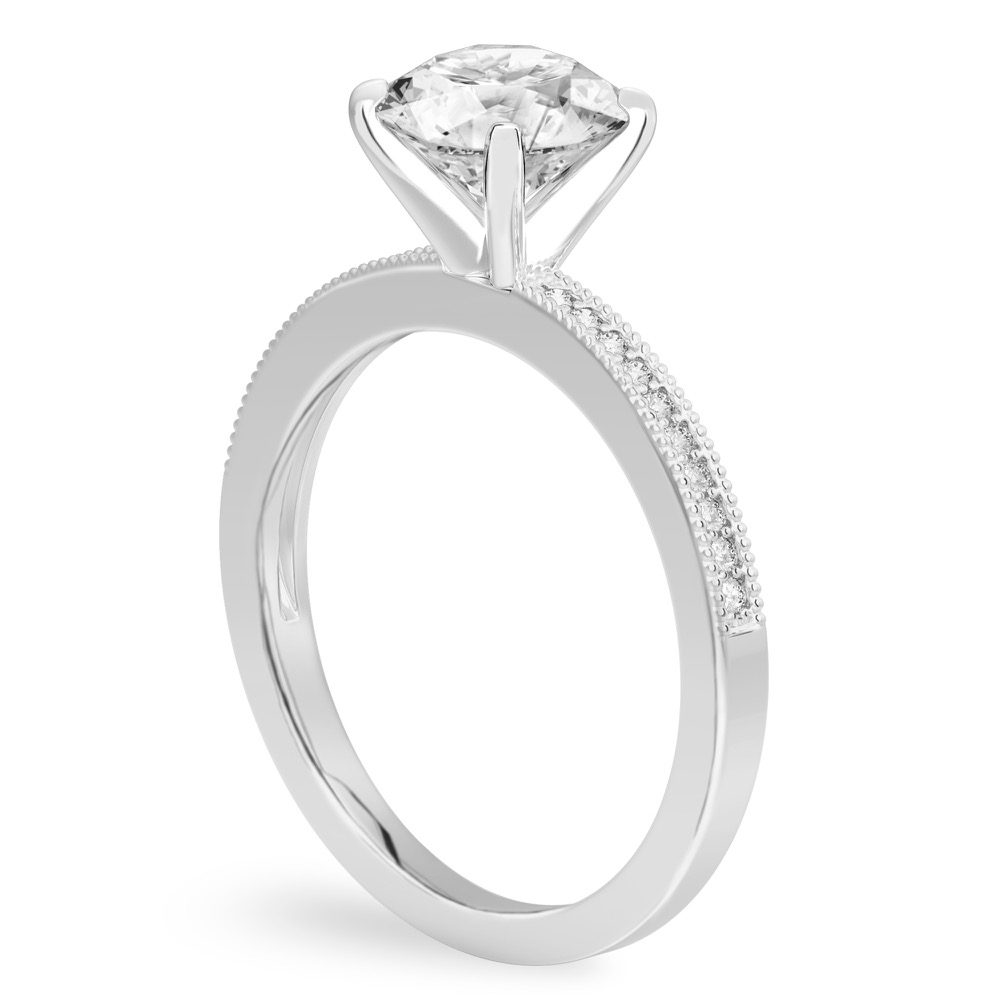
Petite Milgrain Engagement Ring
$880.00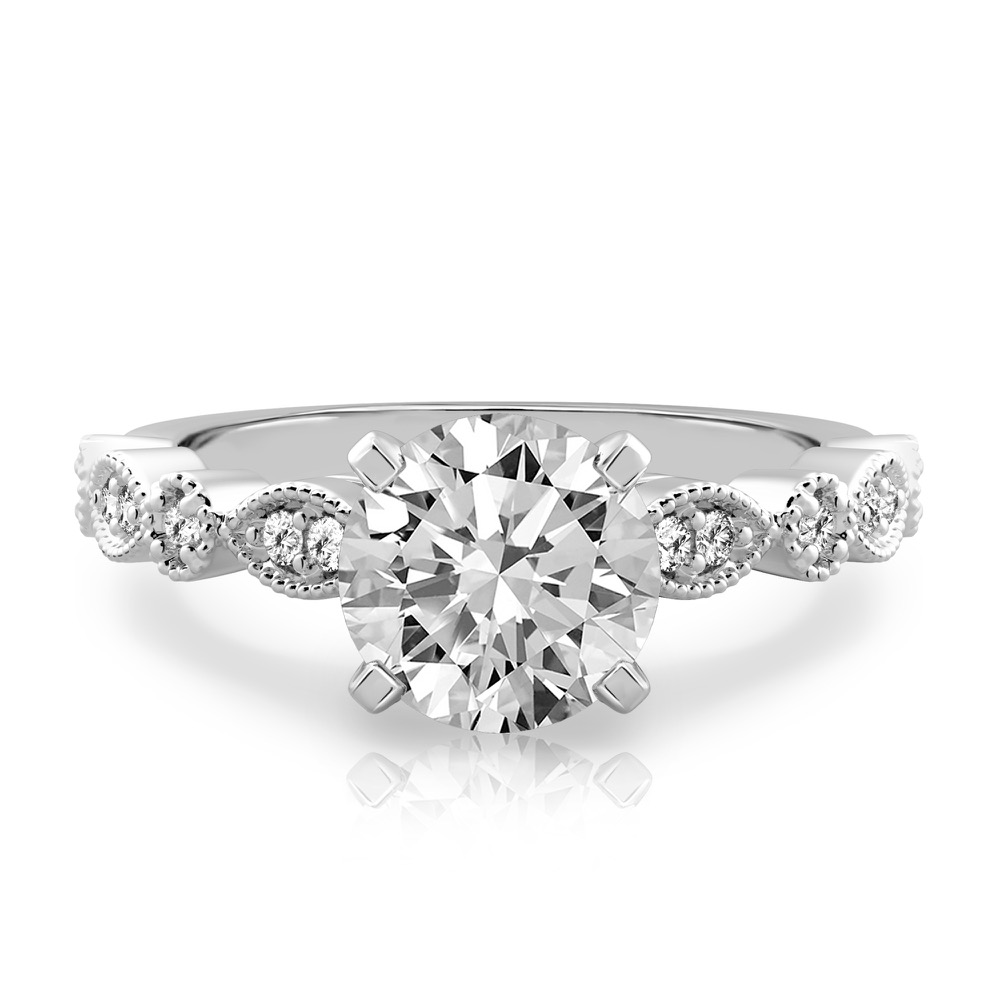
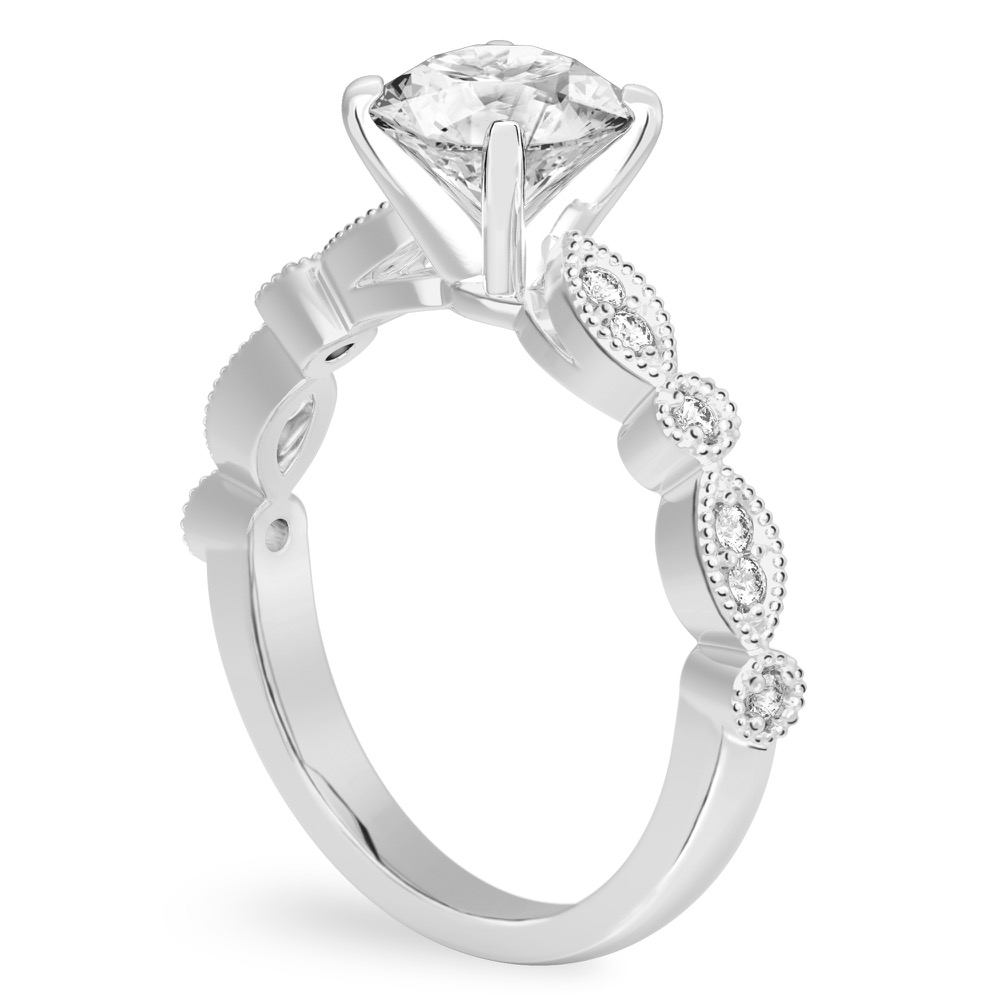
Marquise and Dot Engagement Ring
$980.00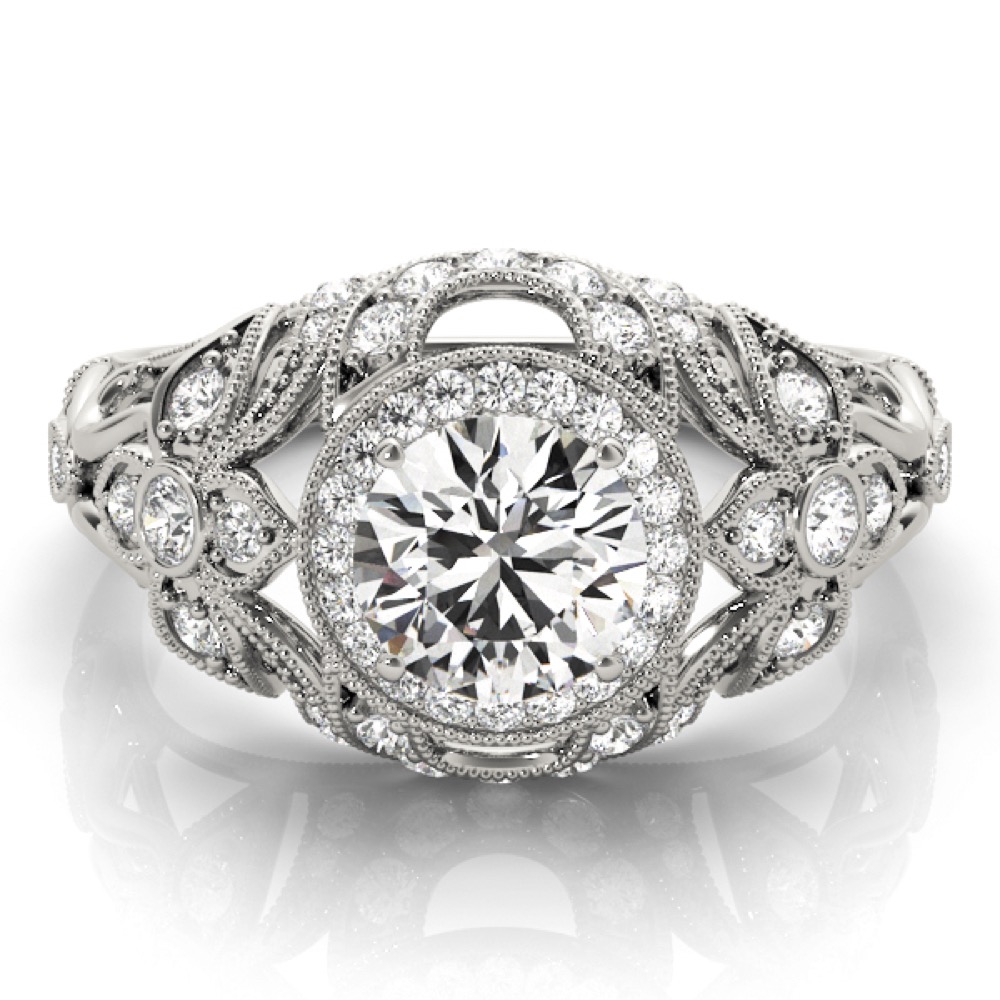
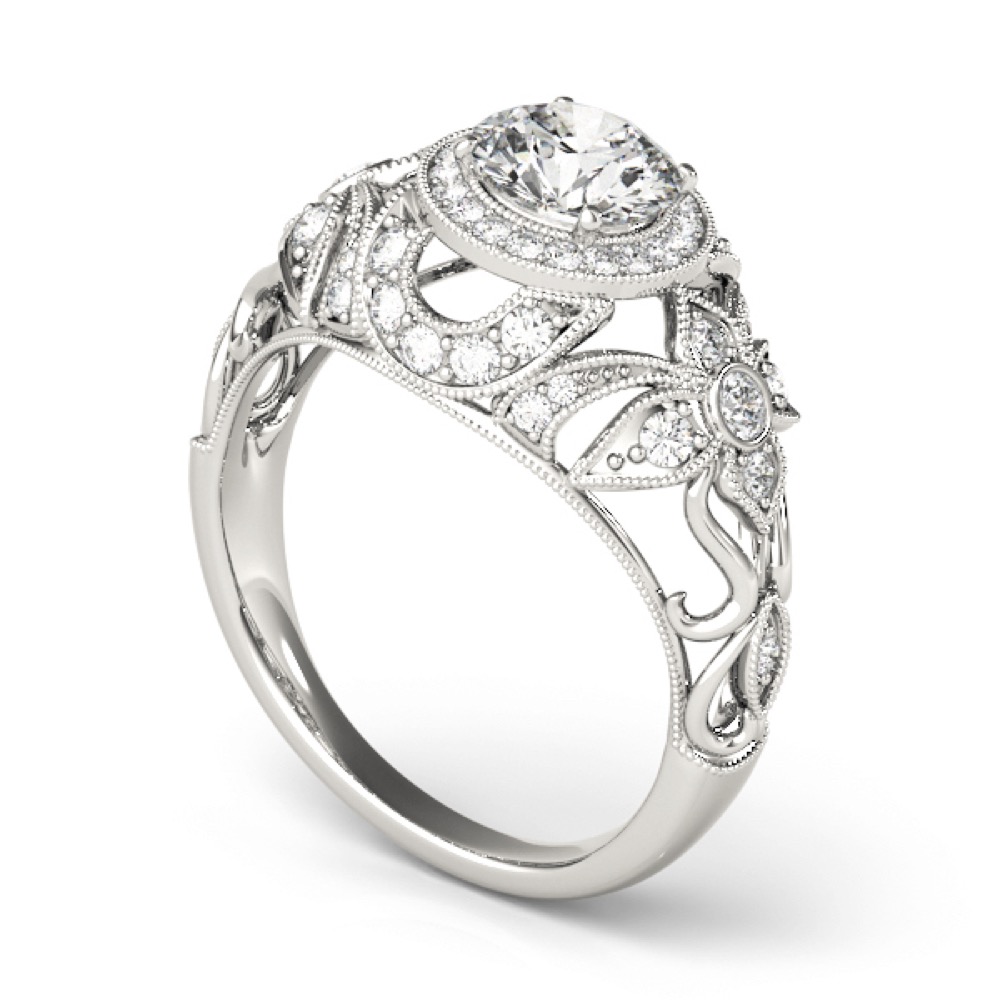
Vintage Inspired Halo Engagement Ring
$1,580.00Because vintage means between 50-100 years old, there are multiple decades of vintage styles! And, because people often use “vintage” and “antique” interchangeably, we’ve included an even wider range of eras to consider here. When choosing an era, consider your partner’s style. Does she like flower? Architecture? Color? Clean lines? There’s an vintage era for everyone!
HOW CAN YOU TELL IF A RING IS VICTORIAN (1837-1901)?
Victorian style vintage rings are often yellow or rose gold with intricate details. Filigree and engraving reign supreme! Floral and lace detailing are very frequently seen, as well. Old mine cut center stones and old European cut diamonds (see more on the difference below!) are also a hallmark of this era! Finally, Victorians were less concerned with diamonds over colored stones, so it’s common to see sapphire, ruby, pink sapphire, and even amethyst, which was considered rare and regal at the time. Learn more about why amethyst isn’t the best choice today here.
WHAT ARE THE CHARACTERISTICS OF ART DECO (1919-1939) ENGAGEMENT RINGS?
Art deco engagement rings are big and bold, featuring multiple shapes and architecturally-styled settings. Couples in the 1920s and 1930s were also fascinated with color, so you will frequently see sapphire or emerald side stones. Colored stone halos are also a popular choice! Rounds, emerald cuts, trillion cuts, and baguettes were all popular in this timeframe.
WHAT IS THE DIFFERENCE BETWEEN ART DECO AND ART NOUVEAU (1890-1914) JEWELRY?
Where art deco is all about hard lines and shape, art nouveau is all about flowing imagery. Because this era occurred after the flowery Victorian era, art nouveau jewelry often also depicts elegant flowers or leaves. However, as jewelers of the time were taking a more modern approach (and heading towards what would be the hard lines of art deco), art nouveau flowers and leaves are more stylized, ginko being a favorite.
WHAT DID MID CENTURY (1930-1970) ENGAGEMENT RINGS LOOK LIKE?
Mid century engagement rings, also called “retro engagement rings” typically feature a more understated appearance. Because mid century design was focused on looking modern, brides wanted a sleek look for their engagement. As a result, mid century rings are often accented with silvery baguette side stones on a simple band. This classic look is a holdover from Art Deco, and remains popular to this day!
OLD EUROPEAN CUT DIAMONDS
What does old European cut diamond mean?
An Old European cut diamond is one of two major cutting styles which was popular prior to the modern round brilliant cut. Old Europeans have big, chunky facets, an open culet (a small facet at the point of the stone) – and most importantly – a roundish outline.
Are old European cut diamonds rare?
Yes, natural old European cut diamonds are rare! This is due to the relative rareness of diamond engagement rings at the time they were popular, combined with an unfortunate phase of recutting over the years. For a certain period of time, grading labs were rating antique cut stones as “poor” instead of taking their age and intrinsic quality into consideration. These stones were then considered less valuable, and subsequently recut. The horror! Fortunately, there has been a resurgence of interest in these gems. So, there are now antique-style natural and lab grown diamonds being cut today!
Are old European cut diamonds good?
I love them. Old Euros have a unique appeal to those who like a vintage, hand-cut look. These stones have lots of personality and quirks! They also throw a lot of rainbow sparkle due to their large facets. So, if you’re looking for a glitzy, old world glam, an Old European should definitely be on your radar.
Do old European cut diamonds look bigger?
It depends on its depth! Old European cut diamonds do not follow the same cutting standards we have today. While many Old Euros are pretty deep (upwards of 70%!) some Euros are also incredibly shallow, allowing for a huge face-up size. To figure out your depth percentage, either consult your certification, or divide your average width by your depth! Stones between 60-64% are going to appear average sized. A higher depth means the stone will face up smaller than expected. A shallower stone means it will face up large!
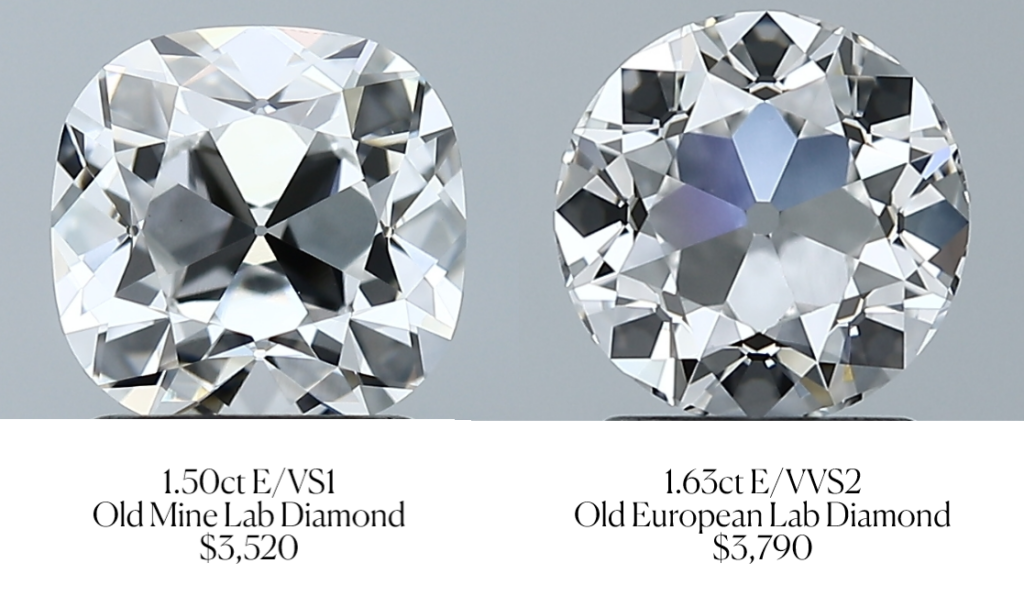
OLD MINE CUT DIAMONDS
What is an old mine cut diamond?
Old mine cut diamonds are the second type of antique cut that was popular prior to the modern brilliant! The first ever cushion cut, old mine cut diamonds (or “old miners”) have a pillow-shaped outline, a high crown, and an open culet.
Do they still cut old mine diamonds?
Yes! Newly faceted old mine cut diamonds are not common to find – but we have them. In fact, we offer both old mine cut natural diamonds as well as old mine cut lab diamonds! This shape is so beautiful, we love setting them in our vintage style engagement ring settings. It is a fantastic way to get an antique look for a fraction of the price.
How can you tell an old mine cut diamond?
A defining characteristic of an old mine cut diamond is the open culet at the base. When your stone has an open culet, it’s most likely an antique (or antique inspired) diamond! To tell the difference between old mine and old European, look at its shape. If it is roundish, it is an old European. If it is cushion shaped, it’s an old miner!
OLD MINE v OLD EURO v ROSE CUT DIAMONDS
When choosing between an old European, Old Mine, and rose cut for your vintage engagement ring, the first thing to consider is how much sparkle you want. Rose cut diamonds have more of a glimmer than a real sparkle. They are best used when a bride is looking for an understated elegance. Learn more about rose cut diamonds here! If sparkle is your priority, choose Old European or Old Mine! Then simply choose if you want a round (Euro) or squarish outline (Mine). You can’t go wrong either way!
DO OLD CUT DIAMONDS SPARKLE?
Yes! There are a few tricks to know, however. Rose cut diamonds have more of a shimmer than a true sparkle. For old euros and old mines, it pays to look for contrast. Contrast are darker colored reflections within a diamond. You want an even amount of contrast (dark) and brilliance (light). This makes sure that when your stone moves, the diamond glitters and sparkles. If you do not have enough contrast, there will not be as much lively play of light. Here is a good comparison. The stone on the left does not have much contrast, and so will not sparkle as much. The stone on the right has an even amount of contrast and brilliance – it will be beautiful!
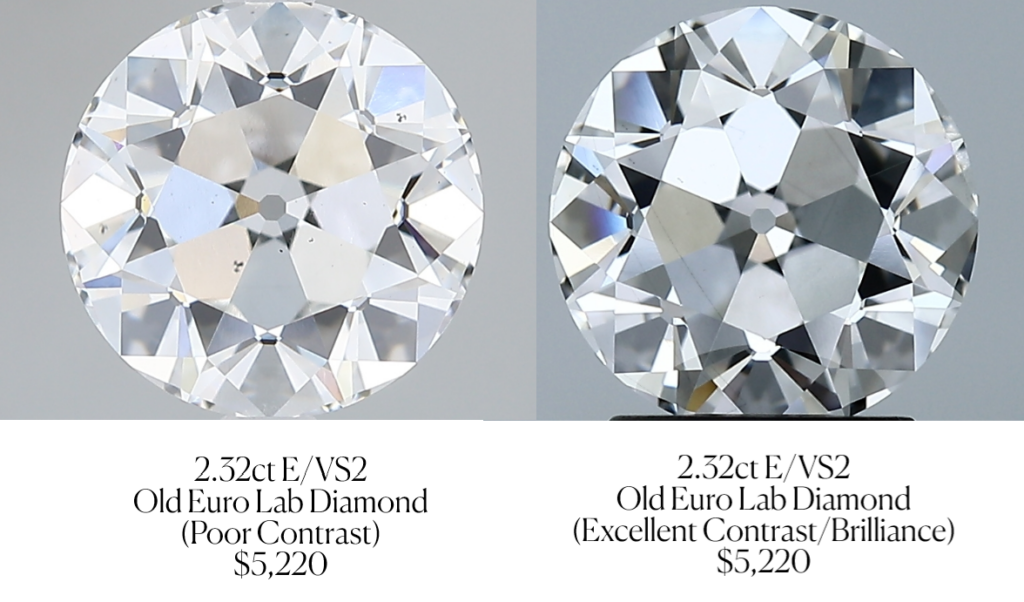
Of course! Simply contact us at care@doamore.com, or fill out the form below and we’ll email you! Whether you’re looking for an art deco style, a pave stunner, or want to know more about old mine vs old euro diamonds – we’re at your disposal. We can’t wait to bring your idea to life.
Call Us
Chat
Chat with us, we’re online!
Email Us
Video consultation
HOURS OF OPERATION
Mon - Fri: 8:00 am - 6:00 pm CT
Sat - Sun: Email only
Verifiably Ethical & Sustainable
Guaranteed 1:1 Impact
Personalized 1:1 Customer Service
handcrafted & american-made
you before us, always
Diamonds, Gemstones, & Metals
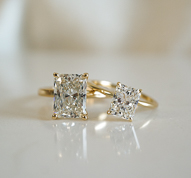
Every piece of Do Amore jewelry begins by not hurting the world. All our natural diamonds are either ethically sourced in Canada, recycled to eliminate additional demand, or accompanied by a blockchain ledger showing every hand your diamond passed through, proving your stone is truly conflict-free.
We also offer sustainable lab-created stones and guarantee all precious metals are recycled to eliminate the environmental impact of mining. Since March 2022, we carry absolutely no Russian diamonds and continue to urge the industry to follow suit.
Clean Water
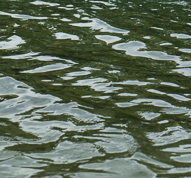
We desire to deepen the well of love in the world. We guarantee that every single purchase—whether engagement ring, wedding band, or piece of jewelry—directly impacts one person’s life by giving them access to clean water.
We do this by directly matching jewelry purchases to people in communities to ensure our funding has a one-to-one impact. We also show you the exact GPS coordinates and a photo of the water well your ring or piece of jewelry helped fund.
Customer Service
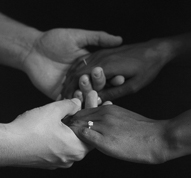
As a small, 100% founder- and employee-owned team, one-to-one encounters are at the heart of our values. Whichever way you want support throughout your engagement ring or jewelry purchase process, our team is here to accommodate you.
From high-touch to hands-off, video calls to text messages, you have our dedicated, responsive team on your side from the moment you start your search, to the day your well is built, to the time we meet again.
Engagement Rings, Bands, & Jewelry
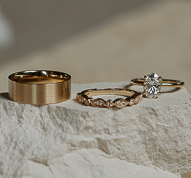
Every Do Amore design, whether one of our own or unique to you, is beautifully handcrafted in America and made specifically for you. Each ring is made to order, every time.
From classic to custom, you have the option to select from dozens of gorgeous settings or work with our design team to create something entirely bespoke. Plus, you are always covered for free inspections, polishing, cleaning, stone tightening, rhodium-plating, and resizing for life.
Our Promise
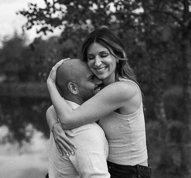
We care about what matters most to you, not what’s easiest for us. If it’s a minor change to a setting or arriving at a completely custom design, we work to ensure you get precisely what you love.
From statement-making to understated, we have options at any price point. Plus, you always have our team on your side searching to bring you every stone within your specifications. We also offer 30-day returns and a limited lifetime warranty to cover you in the rare event of a manufacturing defect.